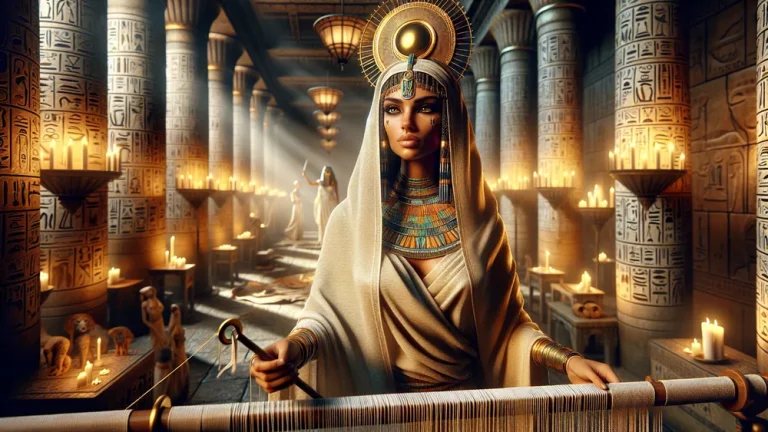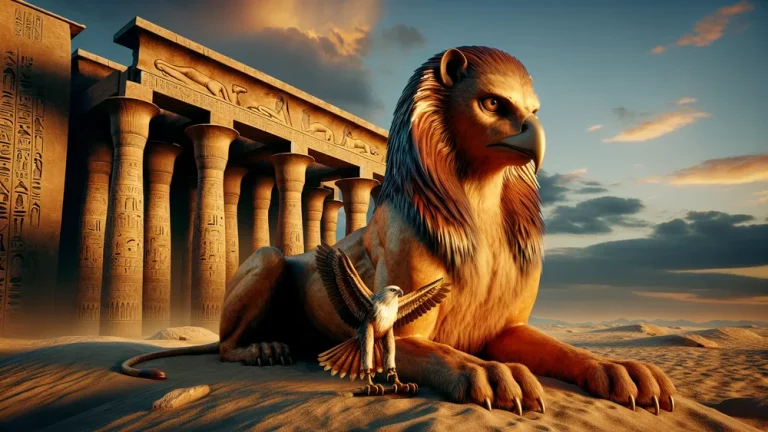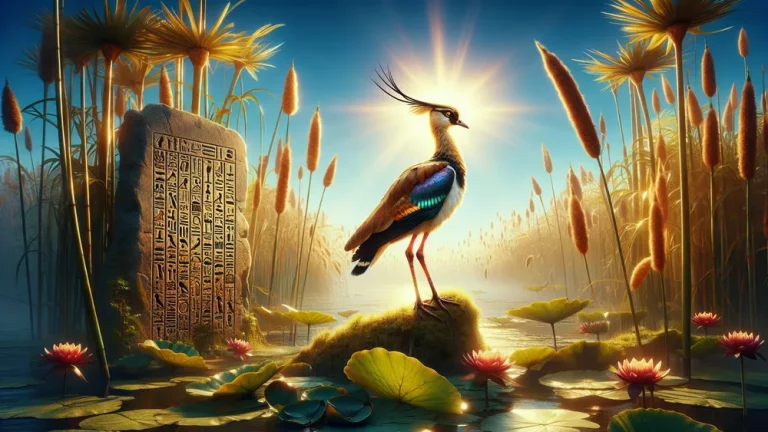Cetus: The Monstrous Sea Creature Of Greek Mythology
In the big picture of Greek mythology, many sea monsters stand out as tough beings that mean the wild and dangerous parts of the ocean. One creature, which brings thoughts of monstrous marine beasts, is called Cetus.
Key Points:
- Cetus is a big sea monster in Greek mythology, linked to chaos and the sea’s mysteries.
- It appears prominently in stories like Perseus and Andromeda, sent by Poseidon.
- Often depicted as serpent-like, maybe resembling a whale in Greek art.
- After Andromeda’s story, Cetus entered the sky as a constellation.
- The myth serves as an example of overcoming chaos through heroism.
- Cetus differs from gods and other sea threats, more like a story villain than a constant threat.
- Modern ideas of sea monsters in stories draw from Cetus’ attributes and symbolic meaning.
It is known in myths not only as a force of powerful anger or the world going out of balance, but also as more than just a bad guy. For people who read old stories, its being is tied closely to tales such as those of Perseus and Andromeda. There, Cetus comes up as a big threat from below.
These sea creatures back then, which people feared, represented the fear of the unknown the Greeks had about the sea, similar to how today, big monsters like the Kraken mean awe and fear.
As you read more into this blog, you will see how Cetus made it into the stars, having a spot among the constellations and cosmic symbolism and comparing with other sea beings from myths.
Cetus: Overview and Key Facts
| Key Aspect | Details |
|---|---|
| Mythological Role | Sea monster; the gods sent it to scare humans. |
| Notable Myths | Linked to Perseus and Andromeda, with Poseidon sending it to bother Andromeda. |
| Symbolism | Means chaos, bad things, and things about the ocean nobody knows. |
| Artistic Depictions | Usually looks like a snake-like thing, maybe like a whale or fish. |
| Parentage | Different stories; in some, from sea gods like Phorcys and Ceto. |
| Cultural Influence | Cetus has changed how people these days make sea monsters in books and movies, meaning deep sea fears. |
| Constellation | Remembered as a night sky constellation, tied to Perseus and Andromeda’s story. |
Cetus and Its Greek Stories
When we go into the core of Greek mythology, we will look at how Cetus begins and the way it makes its impact through the interesting tales found in old stories.
Where Did Cetus Come From?
In the big group of Greek mythology, Cetus’s start has many stories about payback from gods and very old chaos of the sea. In stories, it often appears as a result of the gods’ anger, a scary beast sent to humans, mainly linked to Poseidon’s rule over the oceans.
Different tales give various family trees – some say it starts as a child of sea gods Phorcys and Ceto, while others keep its beginning unclear – but the common idea shows its meaning of the unknown and tough aspects of the ocean. Today’s stories with giant sea creatures that cause fear and wonder are much like how the ancient Greeks used Cetus to mean the sea’s unreliable and huge power.
This reflects how the old people tried to make sense of natural things, offering a story where the disorder of the world was shown by these big sea monsters, casting a sense of awe on human understanding of the sea world.
Cetus in Greek mythology represents the unpredictable and mighty force of the sea, often linked to divine retribution and chaos, mirroring how ancient people made sense of nature through tales of giant sea creatures.
The Stories Behind Cetus
In classical stories, Cetus is a big part of tales about heroes and godly help; it’s often seen as the scary thing heroes beat to bring back order. A famous story is the one about Perseus and Andromeda, a story where Cetus is sent by Poseidon because Queen Cassiopeia said her daughter was prettier than the sea nymphs.
Andromeda is given as a sacrifice to the monster, so Perseus has to save her. This shows the hero is brave and smart, and it also means the win through bravery over unknown natural dangers. Cetus is the scary example of chaos hurting the coastal people, and it shows the fear of sea dangers that Greek people had.
To know more about Cetus’s part in Greek mythology, here’s a list of important myths with this sea monster:
- Perseus and Andromeda: As noted before, Poseidon’s monster sent for payback and finally killed by Perseus.
- Heracles and the Cetos: Not as famous, but some stories have Heracles meeting a sea beast like Cetus, showing his skill.
- Various Lost Works: Old texts, now just known from other mentions, had sea monsters like Cetus, meaning a larger story tradition.
In these tales, Cetus means scary natural powers, and it often marks the story’s high point where heroes face nature’s wild anger. Beating Cetus means winning over chaos and proving human skill to control the world around – a common idea in stories from many cultures.

What Did Cetus Look Like?
In Greek myths, Cetus is usually seen as a big and scary sea monster, and texts describe differently, sometimes like a huge fish or a serpent, being the wild secrets of the ocean. Sometimes, old writings say Cetus is like a whale, which means how big and strong it must have been, yet art makes this idea harder since it shows beast features – razor-sharp teeth, long snake-like bodies, and eyes that are huge.

Greek art, such as vase pictures and carvings, usually drew Cetus with too much fierceness: part dragon, part sea giant. It shows the sudden fear of the open sea.
Also, like the kraken in today’s stories, Cetus is what sailors were scared of because they were at the mercy of sea storms and hidden dangers, reminding them how people tried to learn and control the huge sea world beyond their land.
The Legend of Perseus and Cetus
One tale from Greek mythology that lasts a long time is about Perseus meeting Cetus. It illustrates ideas of being a hero and gods helping out, and the fight with strong powers.
Perseus and the Big Rescue
Perseus, son of Zeus, starts his trip with divine gifts. These are key as he meets big problems needing more than usual skills. His job was to get Medusa’s head, a Gorgon that could turn folks to stone by looking. After he did this with items like Athena’s shiny shield, Hermes’ flying shoes, and Hades’ invisibility hat, Perseus travels back.
It’s then he finds Andromeda, stuck on a rock for Cetus, which was hinted at by prophecy and godly plans. Poseidon sent Cetus after Queen Cassiopeia bragged her daughter was prettier than his sea nymphs, to mess up the Ethiopian shores. Cetus means nature’s big forces played by the gods to cause chaos because of gods’ anger.
Andromeda, given as a peace offer, sets the stage for Perseus’s hero display. Similar to ideas in many hero stories, Perseus shows up right on time. With the Medusa head – a key divine tool – he turns the beast to stone, saving Andromeda and bringing peace.

Perseus’s story isn’t only about being a hero, but about how people and gods work together. The divine tools he used were very important, again showing heroes need higher powers in Greek tales. The main tools he used include:
- Athena’s Shield (Aegis): For looking at Medusa safely without turning to stone.
- Hermes’ Winged Sandals: For flying fast, a must for his trips.
- Hades’ Helm of Invisibility: To move around unseen, good for sneaky parts.
- Medusa’s Head: Was a strong weapon against Cetus and others. These things made Perseus more than just human, allowing him to face the monster Cetus, and freeing Andromeda, which wrote his name into stories.
When Andromeda Met Cetus
The story of Andromeda being offered to Cetus starts with a picture of human pride and godly payback. Queen Cassiopeia said her daughter Andromeda was prettier than the Nereids, who were sea nymphs Poseidon liked. This made Poseidon very mad. Sudden and strong, his anger is often shown by sending Cetus to the coast as payback, ready to destroy unless Andromeda was given.
This means times in Greek myths when people make gods mad, a shaky balance between humans and gods. The offer of Andromeda means fixing a problem, much like when one thing is sacrificed to save a group, seen often in other cultures too.
Looking at what this tale means, it reminds us how people and places are weak against nature and gods, who can be so random. Myths often mean to find a way to deal with powers beyond human hold, pointing out big fears of things humans can’t fix. Andromeda’s fate wasn’t just to calm an angry god.
It meant showing duty and submission to gods, seen in many stories where people work to stop disaster. The story of Andromeda, while she waits for doom, shows thoughts on women and sacrifice, a theme across many old cultures where women sometimes bring back peace and order.

Andromeda’s story means how myths deal with human struggles against powerful forces by showing sacrifice as a way to calm angry gods and bring peace.
How Cetus Made It to the Night Sky
Besides being a mythical threat, Cetus also reaches the stars in the sky, where its scary figure can be seen. Interestingly, it is there, linking stories of its past with the night sky.
Cetus: From Stories to Stars
Cetus is a group of stars taking up a big spot in the sky, meaning how old Greek stories linked to stars overhead. Greeks saw Cetus in the sky as one of the big star groups because it was big and in a spot connecting other zodiac star groups. People thought it was the monster in stories that Perseus defeated.
This link of stories to stars was a way to tell stories, placing them in the sky for later folks to find, being like guides.

Notably, Cetus is important not just in tales but also for its bright stars, which have been checked by star-watchers over time. This star group has many notable stars, each making the story stronger and important. Here’s a list of some of the key stars in Cetus:
| Star Name | Designation | Magnitude | Description |
|---|---|---|---|
| Deneb Kaitos | Beta Ceti | 2.04 | Called “the Whale’s Tail,” a bright star. |
| Menkar | Alpha Ceti | 2.54 | Stands for the creature’s nose or jaw. |
| Diphda | Gamma Ceti | 3.47 | Another bright part of Cetus. |
| Baten Kaitos | Zeta Ceti | 3.74 | Makes up part of the creature’s body. |
These stars help shape the constellation’s body and strengthen the link between stars and stories. The ongoing merging of myth and sky in cultures helps us see how old people figured out their world, mixing stories into the skies they watched.
Comparing Cetus with Other Sea Creatures
While we move from sky to ocean stories, something interesting happens; we see how Cetus measures up against other famous sea creatures found in Greek stories. This is key.
How Cetus Stacks Up Against Other Sea Gods
Cetus is a tough sea monster in Greek stories which acted differently compared to important gods like Poseidon or scary ones like Scylla and Charybdis. Poseidon, the powerful god of the sea and things like earthquakes, was in charge of a large area, influencing sailing and people’s lives.
But Cetus acted mainly as a bad guy in the story about Andromeda, showing its role was not about having godly power but more about being a symbol of danger. Poseidon, on the other hand, had control over everything related to the sea, while Cetus was mostly important in specific hero stories.

Yet, Cetus was a big monster giving a clear picture in Greek stories, showing off the bravery of heroes like Perseus.
Unlike Cetus, other famous sea monsters such as Scylla – a many-headed creature eating sailors – and Charybdis, which means a deadly whirlpool, were constant threats in sailing stories. They suggest the sea was unpredictable and dangerous, unlike Cetus, who wasn’t a constant threat. They can be thought about by looking at these myths:
- Poseidon: He is the god of the sea and horses; a vital figure with wide powers.
- Scylla: Many-headed creature; a long-lasting problem for sailors.
- Charybdis: Acts as a whirlpool; represents natural sea hazards.
- Cetus: Tough sea monster; a problem in hero stories, not always around.
These beings, from powerful gods to scary monsters, add different ideas to Greek stories, affecting how people saw the sea and the world, each playing its own role.
Pantheon of All Greek Mythology Creatures
Greek stories are famous for their huge list of creatures, all designed with special traits and roles, adding to many fantastic stories from long ago. From strong gods to scary monsters, these figures act as symbols, important in stories, and fun parts in Greek detailed stories. As helpers or enemies, or warning figures, they affected writing, art, and even some pop culture today.
If you want to learn about the full range of these interesting beings, a detailed list of all Greek Creatures and Monsters is a great place to look deeper into Greek mythology’s stories.
FAQs
1. What does Cetus symbolize in Greek mythology?
In Greek mythology, Cetus symbolizes the chaotic and terrifying forces of the sea that threaten humanity and must be subdued by heroic intervention.
2. How did ancient Greek art depict Cetus?
Ancient Greek art depicted Cetus as a monstrous sea creature with features combining various elements of a whale and sea serpent, often portrayed in scenes of mythological narratives, especially in vase paintings and sculptures.
Are there other myths outside of Greece that featured similar creatures, such as Jormungandr in Norse mythology or Leviathan in biblical texts, both of which are ancient sea monsters comparable to Cetus?
4. How has Cetus influenced modern interpretations of mythical sea monsters?
Cetus has influenced modern interpretations of mythical sea monsters by serving as a foundational archetype for enormous, fearsome sea creatures in literature and popular culture.







